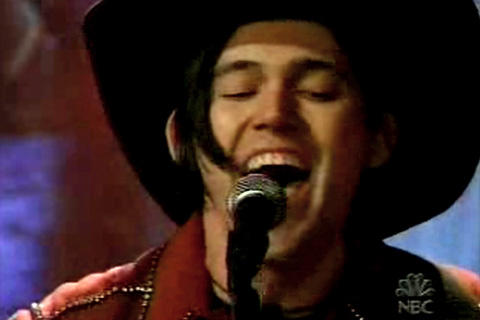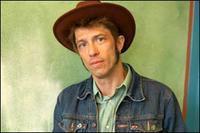White Men Can't Run
 Air Force Academy football coach Fisher DeBerry commented last week, on his team's 48-10 loss to Texas Christian University, that TCU
Air Force Academy football coach Fisher DeBerry commented last week, on his team's 48-10 loss to Texas Christian University, that TCU"had a lot more Afro-American players than we did and they ran a lot faster than we did ... It just seems to me to be that way. Afro-American kids can run very well. That doesn't mean that Caucasian kids and other descents can't run, but it's very obvious to me that they run extremely well."
So white men can't run either?
If this is DeBerry's strategy, it's clear why he's sitting at 3 and 6 so far this season. What a maroon! What I really relish demolishing, though, is John Walters' Campus Blitz experiment. John needs to go back to those notes he took in quantitave analysis class.
Walters first establishes a specimen group of "speed" positions: tailback, wide receiver/flanker (2), cornerback (2), and safety (2). He then limits his study to the current AP Top 25. No problems yet. After a thorough search of these 7 positions (for all 25 teams, his sample includes 175 players), Walters finds only 12 white players.
At this point, things start going haywire. Walters says 12 out of 175 equals 6.9 percent, while five of the seven starters on the Air Force team are white. Walters then notes that the United States is 81.7 percent white and 12.9 percent black. As a result:
"Basically, white people outnumber black people in this nation almost 7 to 1. Whereas, in the speed positions among the current Top 25 teams in Division I-A, blacks outnumber whites almost 7 to 1."
Walters says this even though, just above, he has 6.9 percent as the white percentage. A simple calculator will tell him that 6.9 percent equals 1 in 14.5. He's never confirmed that all the other non-white fast positions are black; therefore, if blacks outnumber whites 7 to 1 but non-white outnumber whites 14.5 to 1, then the largest single amount of runners are non-white and non-black. Hispanic? Asian? Native American? Who knows?! (Obviously, he can't tell the difference between percentages and odds, which is going to kill him at the races...)
Further, Walters notes that the United States as a whole is 81.7 percent white and 12.9 percent black. This is called a "control group"--the problem is that Walters' control group is non-representative. Walters could also point out that all the speed positions are male, and the US is 50 percent female; all the speed positions are between the ages of 19 and 23, while in the US as a whole the vast majority are not; etc...
Walters apparently can't see that top-ranking NCAA Div. 1 players come from a very carefully selected sample of youth. Some might argue that these youth were misdirected in junior high and high school away from more successful pursuits and toward sports, which resulted in their current exploitation as unpaid professionals working for their (lack of an) education as they try out for the NFL. Such misdirection is only possible among very poor and marginalized communities, and such communities are predominantly black in this country. Walters might further say something about the NFL lifespan of a running back, among the shortest in the NFL (I believe) because their knees give out so quickly. Who would prize such a position? Obviously, someone with limited options in life.
Walters could have spared revealing his ignorance had he proposed a control group made up of the rest of the NCAA Div. 1 starting positions. He might also make a close study of the Sudetenland Chinese.
As to his parting question--"Were [DeBerry's comments] inaccurate? I'll let you decide"--we still don't know, John, and it's all your fault.







